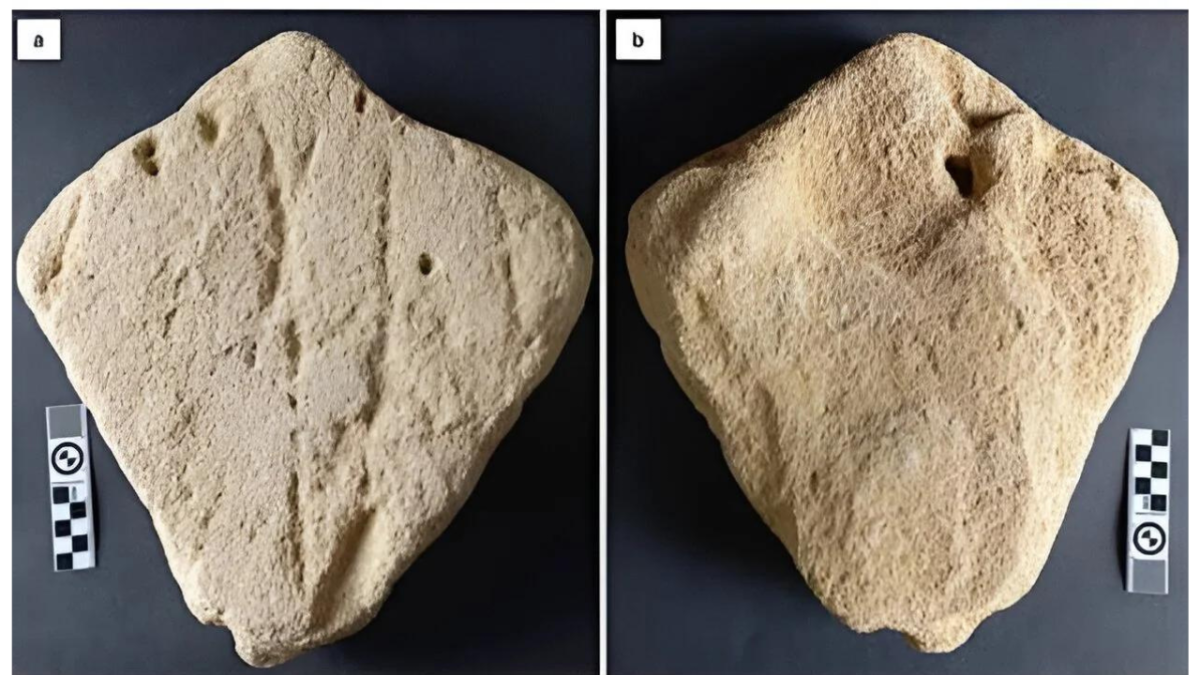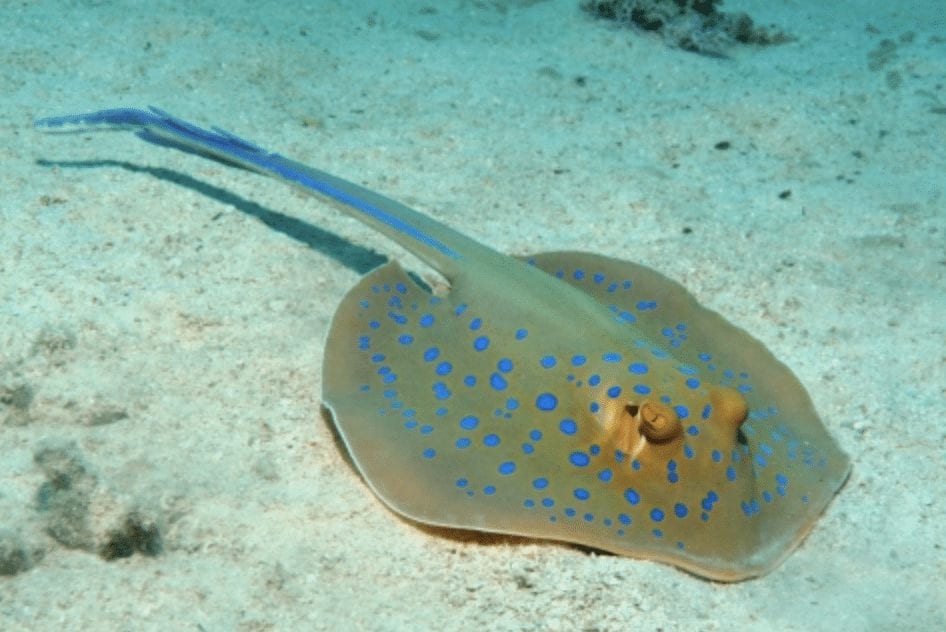
130,000-year-old stingray sand sculpture in South Africa may be world’s oldest animal art
The researchers analyzed an object that at first glance appears to be a symmetrical rock east of Still Bay, about 205 miles (330 kilometers) from Cape Town. The analysis suggested that the object could be a prehistoric sand ray sculpture.
The aeolianite rock was unusually symmetrical and mysteriously shaped like a stingray. However, its tail was missing.
It is thought that dating the find may have caused damage. But optically stimulated luminescence dating of neighboring rocks showed that the alleged artwork could have been made around 130,000 years ago.
Researchers speculate that the rock could be a man-made copy of a local blue ray (D. chrysonota) due to its symmetry and surface grooves.
The study was published in Rock Art Research.
Study co-authors Charles Helm, a paleontologist at Nelson Mandela University, and Alan Whitfield, Chief Scientist Emeritus at the South African Aquatic Biodiversity Institute, wrote in The Conversation that their conclusions are “highly informed speculations based on our understanding of tens of thousands of such rocks.”
“This is the first and so far only example from this time period that suggests monitoring. The chances of something like this being preserved and amenable to our interpretation are remote, so it is possible that this is the only example identified so far, but we can always hope that more will emerge,” Charles Helm, lead study author and Research Associate at the African Centre for Coastal Paleoscience at Nelson Mandela University, told IFLScience.

“Symmetry is always intriguing and can have a range of origins, only one of which is human,” Helm and Whitfield wrote. “But it always begs for an explanation, and such multiple levels of symmetry support a hominin origin: the possibility that the combination of multiple symmetric features is due to chance alone is remote in our view.”
The stone is kite-shaped and has near-symmetrical grooves on one side. The base of the stone has been stabbed and it is thought that the “tail” on the stingray may mark the place where it could have been ceremonially removed.
The oldest known piece of animal art is a 43,900-year-old painting of a warty boar found in a cave in Indonesia. The oldest hunting representations date from around the same period and were probably made by Neanderthals, even if there are older animal artworks.
Despite being a mythical human-lion hybrid, the 40,000-year-old Lion-Man statue found in the Hohlenstein-Stadel cave in Germany is thought to be the oldest known representation of an animal.
Cover Photo: (a) The upper surface and (b) the lower surface of the purported sand sculpture; scale bars are in cm.Figure 4. (a) Features on the upper surface of the purported sand sculpture; (b) symmetrical features; (c) asymmetrical features. Rock Art Research
You may also like
- A 1700-year-old statue of Pan unearthed during the excavations at Polyeuktos in İstanbul
- The granary was found in the ancient city of Sebaste, founded by the first Roman emperor Augustus
- Donalar Kale Kapı Rock Tomb or Donalar Rock Tomb
- Theater emerges as works continue in ancient city of Perinthos
- Urartian King Argishti’s bronze shield revealed the name of an unknown country
- The religious center of Lycia, the ancient city of Letoon
- Who were the Luwians?
- A new study brings a fresh perspective on the Anatolian origin of the Indo-European languages
- Perhaps the oldest thermal treatment center in the world, which has been in continuous use for 2000 years -Basilica Therma Roman Bath or King’s Daughter-
- The largest synagogue of the ancient world, located in the ancient city of Sardis, is being restored











Leave a Reply